Japan Sea Port Town: Historic Site of Wealthy Merchants and Brave Boatmen
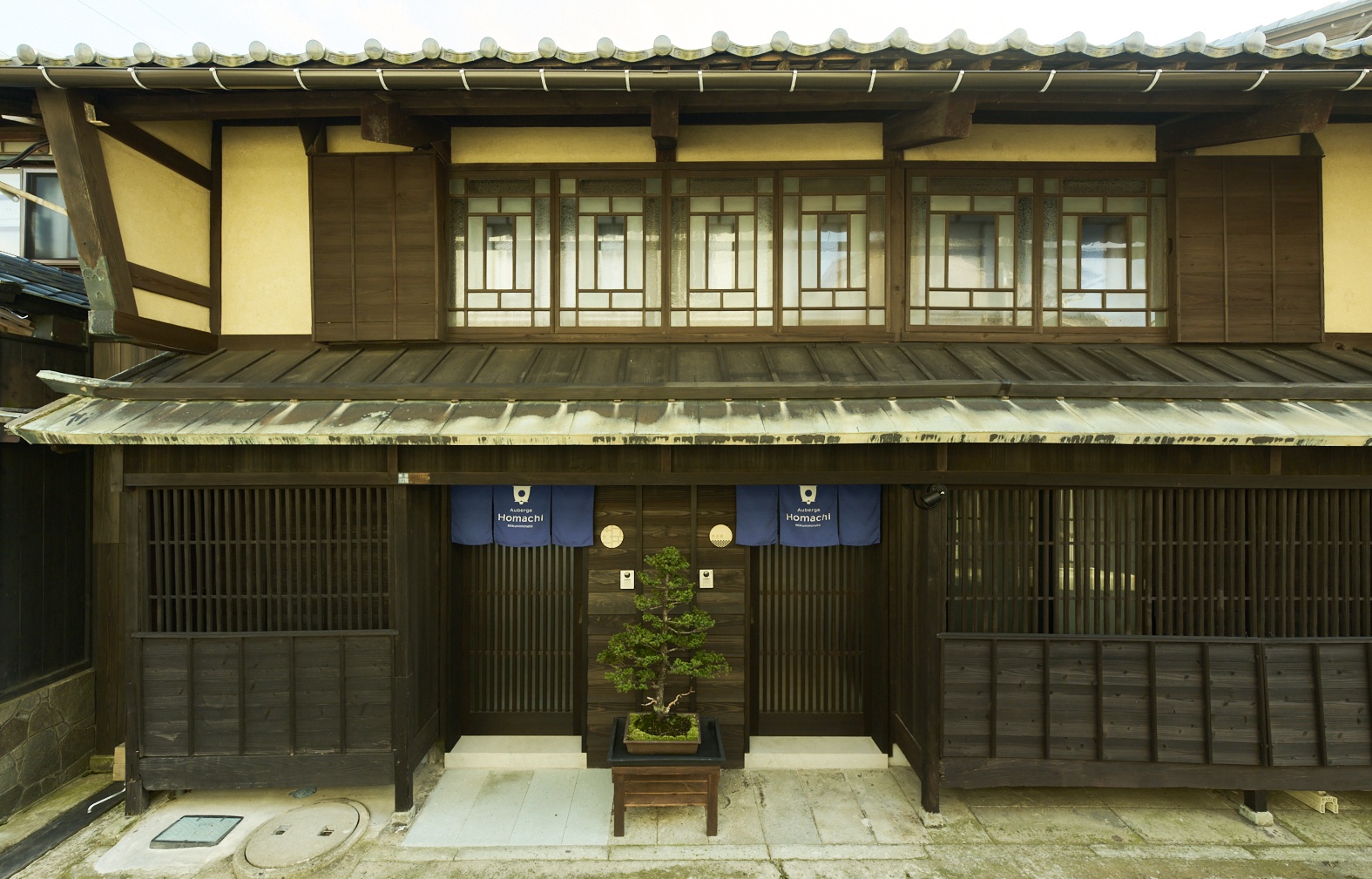
If you’re tired of the popular golden route between Tokyo and Kyoto, visit Mikuni Minato, a port town on the Kitamae sea route dating from the eighteenth century. From here, bold local merchants set sail to destinations up and down the coast of Japan, bringing wealth to the successful. Its charms dating from that period are a treat for travelers.
By Ching-Li TorNew wave of tourism for Fukui
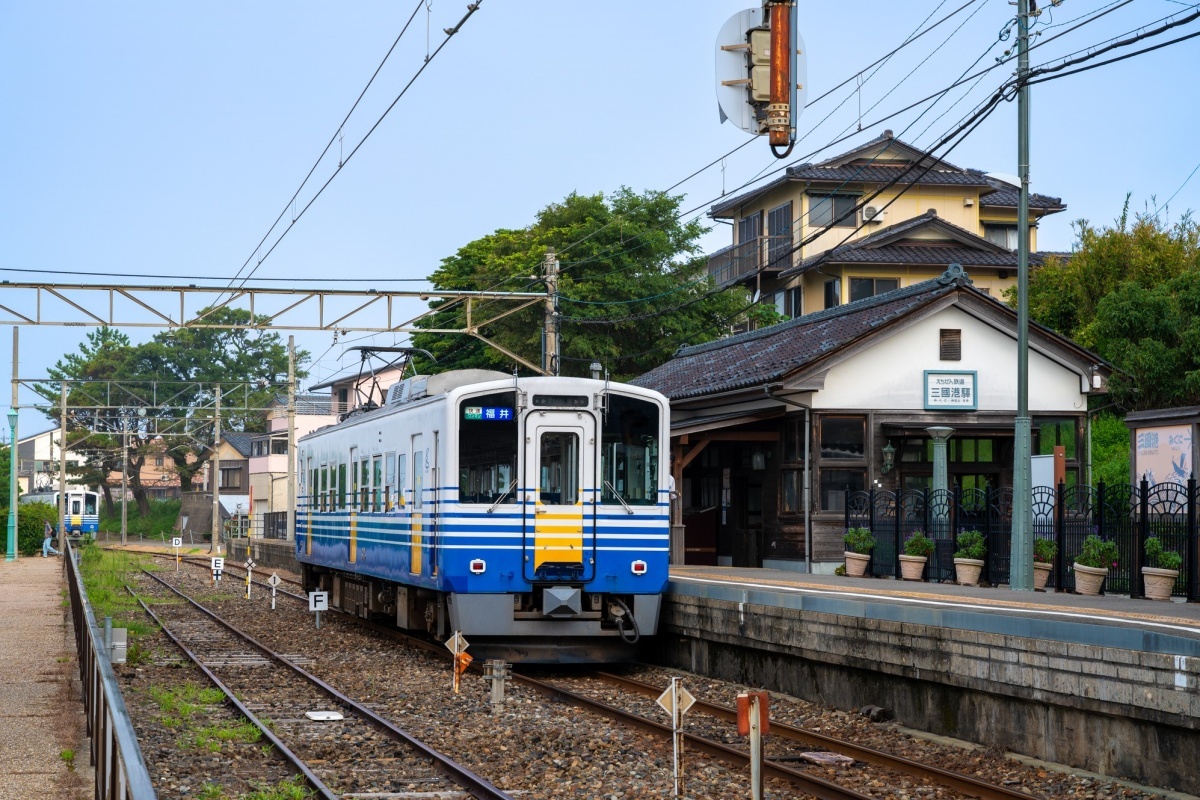
The extension of the Shinkansen bullet train service last March to Tsuruga in Fukui Prefecture has sparked new tourism developments in this region of western Japan. It includes Mikuni Minato, a town that flourished as a port of call for the Kitamae merchant ships, that plied the stormy Sea of Japan from Hokkaido to Osaka. The Echizen railway is also renewing many of its depots, including the Mikuni-minato Station, in order to welcome more tourists with improved accessibility.
The streets and townscape of Mikuni Minato port ooze with nostalgia, with lattice-doored townhouses and historical architecture that reflect its prosperous past. This makes the perfect setting for charming redevelopments that breathe new life into Edo-era buildings by transforming them into cafes, restaurants and accommodations. Best of all, the port town is not crawling with tourists—just yet.
Auberge Homachi: Encouraging experiential stays
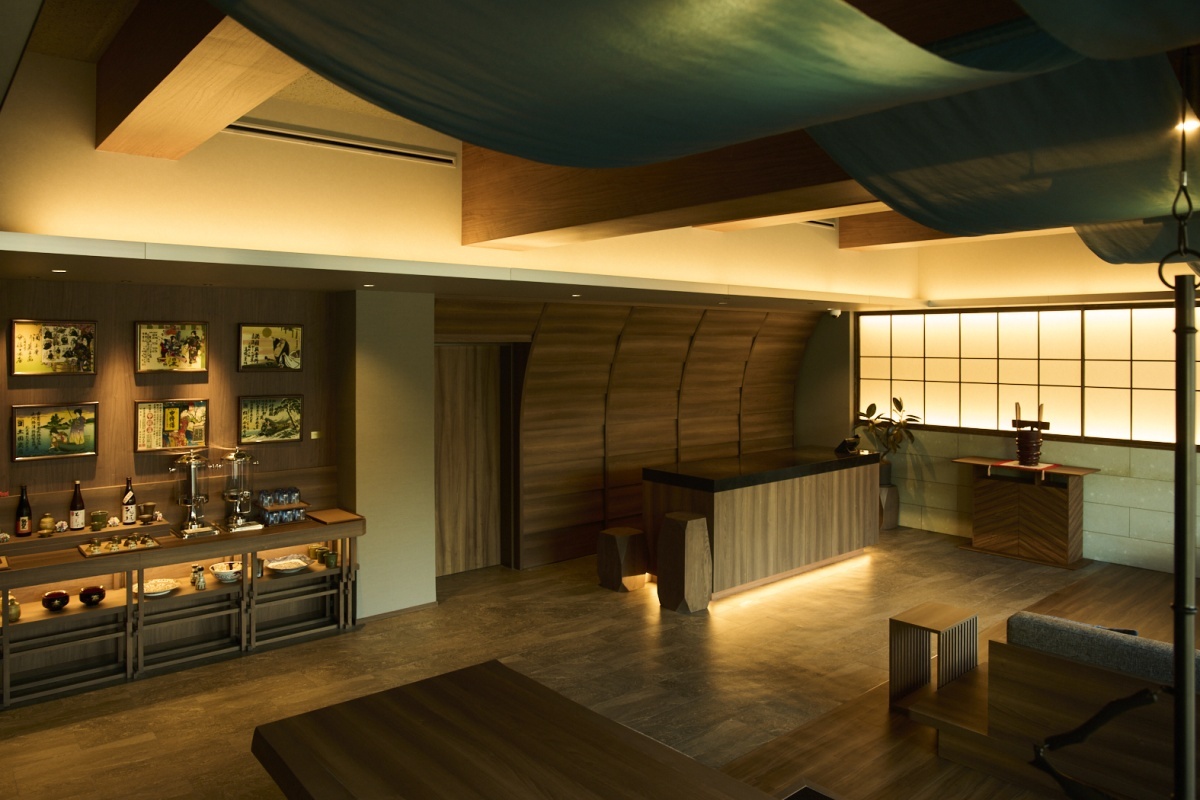
The interior of the hotel recreates the look and feel of a Kitabune ship.
The unique Auberge Homachi Mikuniminato opened in January in Sakai City. The concept was to turn Mikuni Minato a “townhouse hotel,” converting traditional townhouses scattered throughout the area into guest rooms that retain the original building’s characteristics. It now consists of nine buildings accommodating 16 rooms and one French restaurant.
General Manager Kiyoshi Sekita says the 2024 New Year’s Day earthquake that hit the Hokuriku region greatly affected visitors and set back their opening. But things are now looking up, with rooms fully booked for the Mikuni Sunset Beach summer fireworks festival on August 11.
Homachi (“waiting for the wind”) refers to the way the Kitamae ships used to wait offshore for friendly winds to set sail for their destinations. Similarly, Auberge Homachi awaits an increase in visitors to their accommodations. “We want visitors to experience how it feels to live in the town and experience the local culture and heritage through their stay,” he says
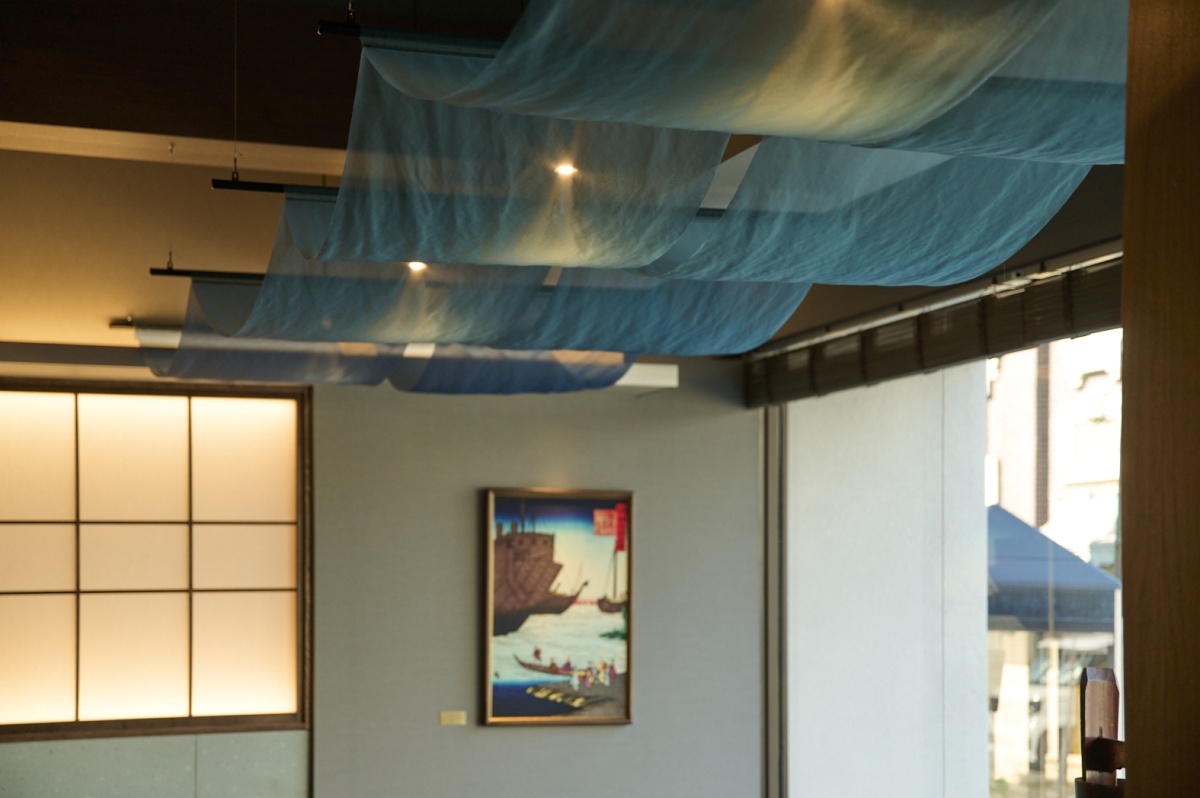
The ceiling decorations are meant to resemble the waves of the Sea of Japan.
The front desk/concierge of Auberge Homachi is located in the center of the town, with an interior designed to make you feel as if you are in the hull of a Kitabune ship.

Guests can enjoy a sip of local sake upon check-in.
Hotel guests can get a taste of local sake upon checking in, as famous sake labels from Fukui welcome them at the hotel lobby. Guests are given a map and are encouraged to locate their townhouse in order to get to know the area, but transport by the hotel van is also available.
The homely feel of the converted traditional townhouses is aimed at inviting longer term stays of four nights or more. A range of activities are lined up to encourage such stays, including walking tours of the area to classes in bonsai making, shamisen playing, traditional paper lantern-making and participation in seasonal local festivals.
Walking-friendly town
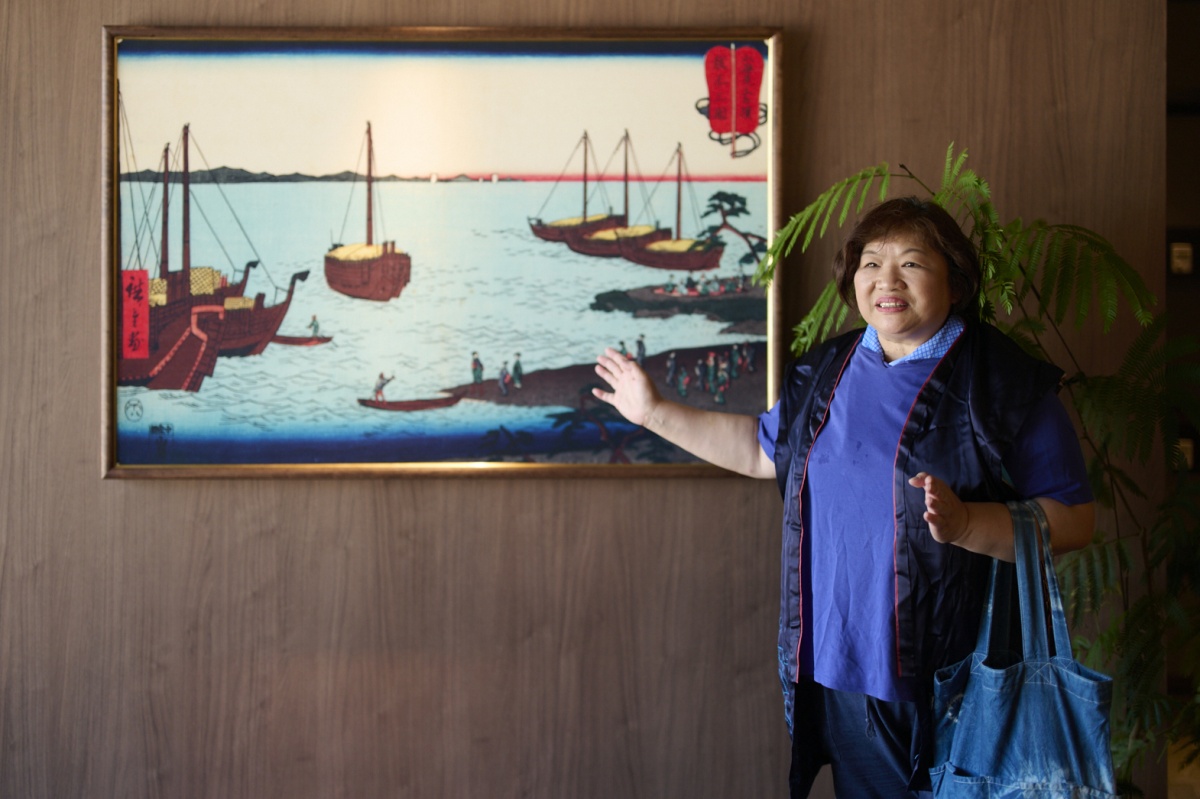
Junko Hirabayashi, a qualified tour guide, explaining the history of the Kitamae merchant ships with a woodblock print of the port.
According to Sekita, if map-reading isn’t your forte, a two-hour English-language guided tour is available that introduces local landmarks, history, and culture.
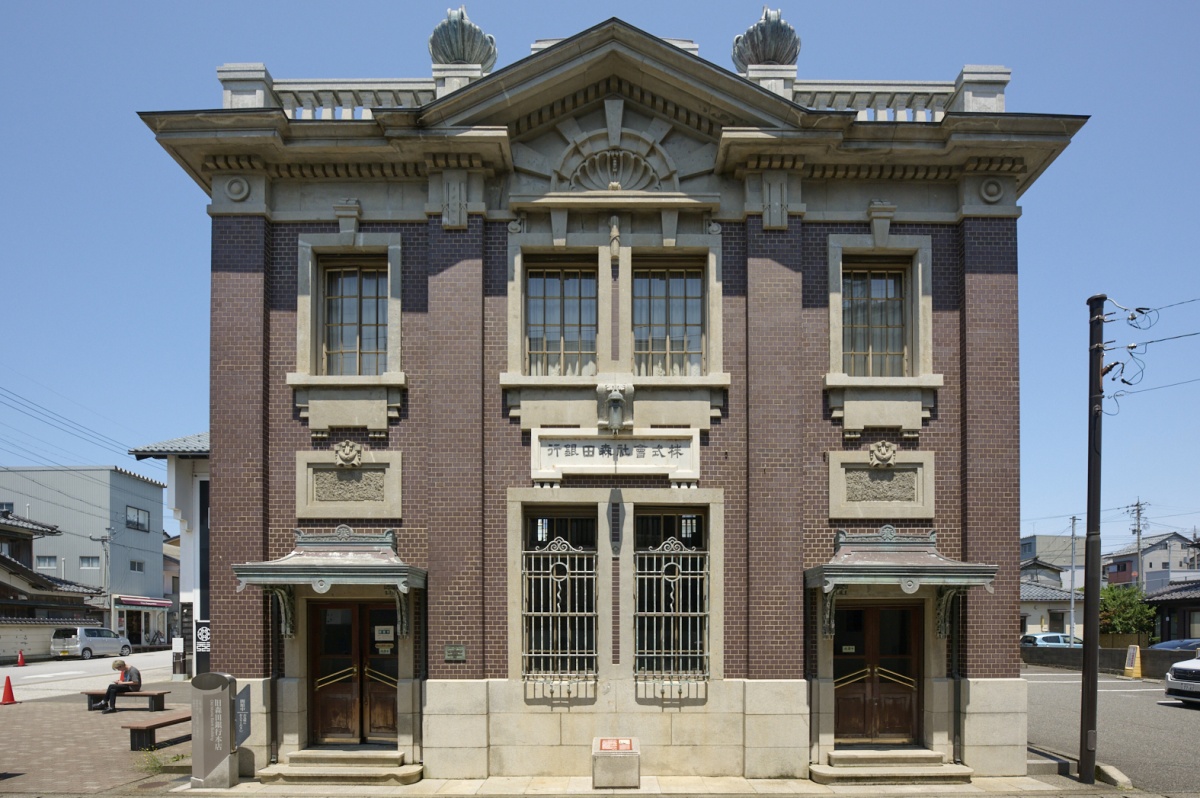
The former Morita Bank Headquarters is a registered Tangible Cultural Property of Japan.
Former Morita Bank Headquarters
The tour starts at the former Morita Bank Headquarters, built in 1920 by the Moritas, a wealthy merchant family who grew from being a ship broker into the financial sector.

The luxuriously designed plaster on the ceiling is best admired from the second floor.
The elegant architecture and lavish design details speak of the booming trade of the port town during the Edo era. The best Fukui craftsmen were employed to showcase their skills for the bank, an example of which is the luxuriously designed plaster on the ceiling.
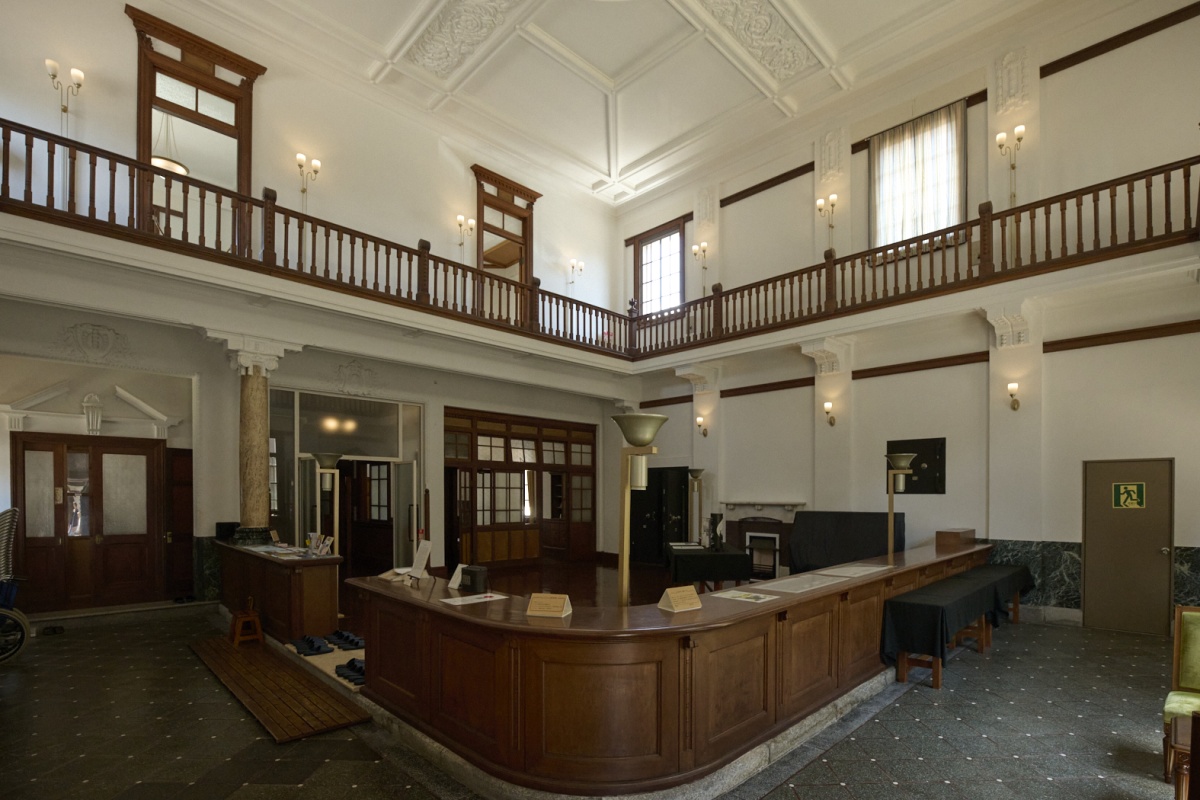
The beautiful, understated sophistication of the bank speaks of the wealth the town enjoyed.
Explained tour guide Hirabayashi, “The service counter is made of a single sheet of Japanese zelkova.” She also pointed out the beautiful inlay works applied on and inside the cabinets.
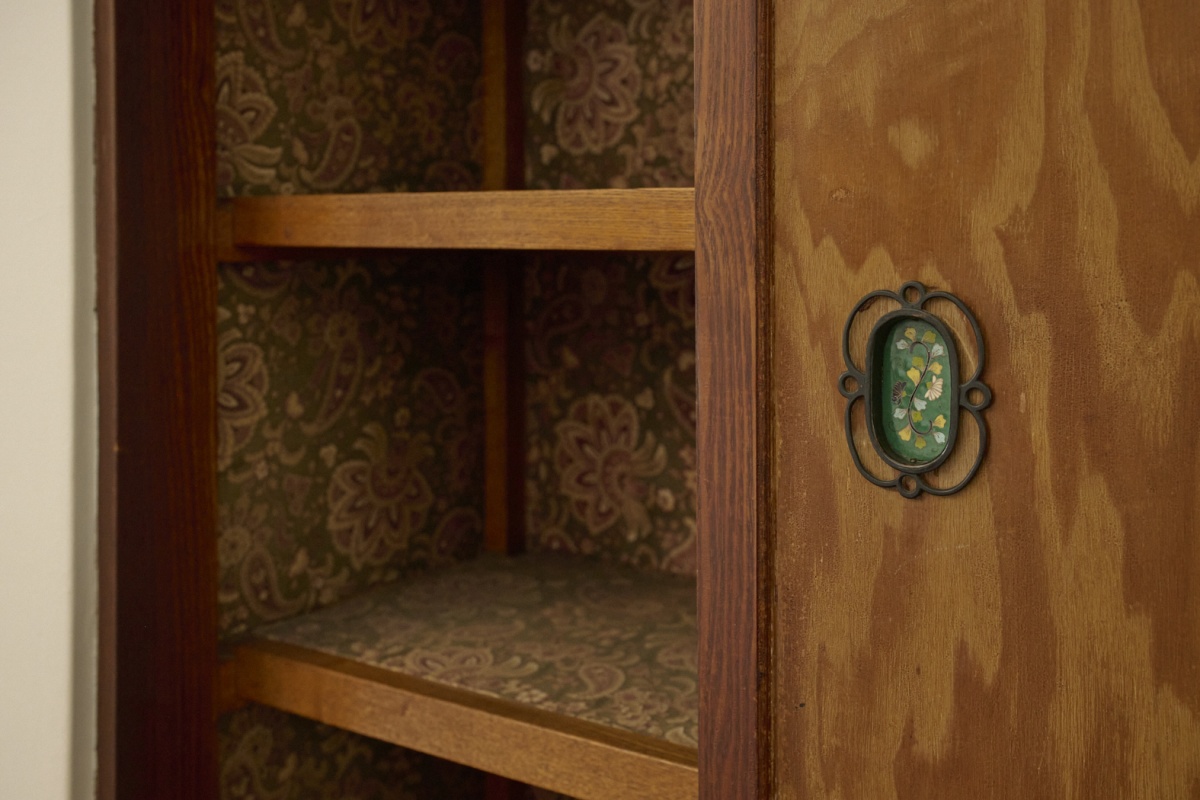
The bank boasts elegance in every detail, even in unseen corners.
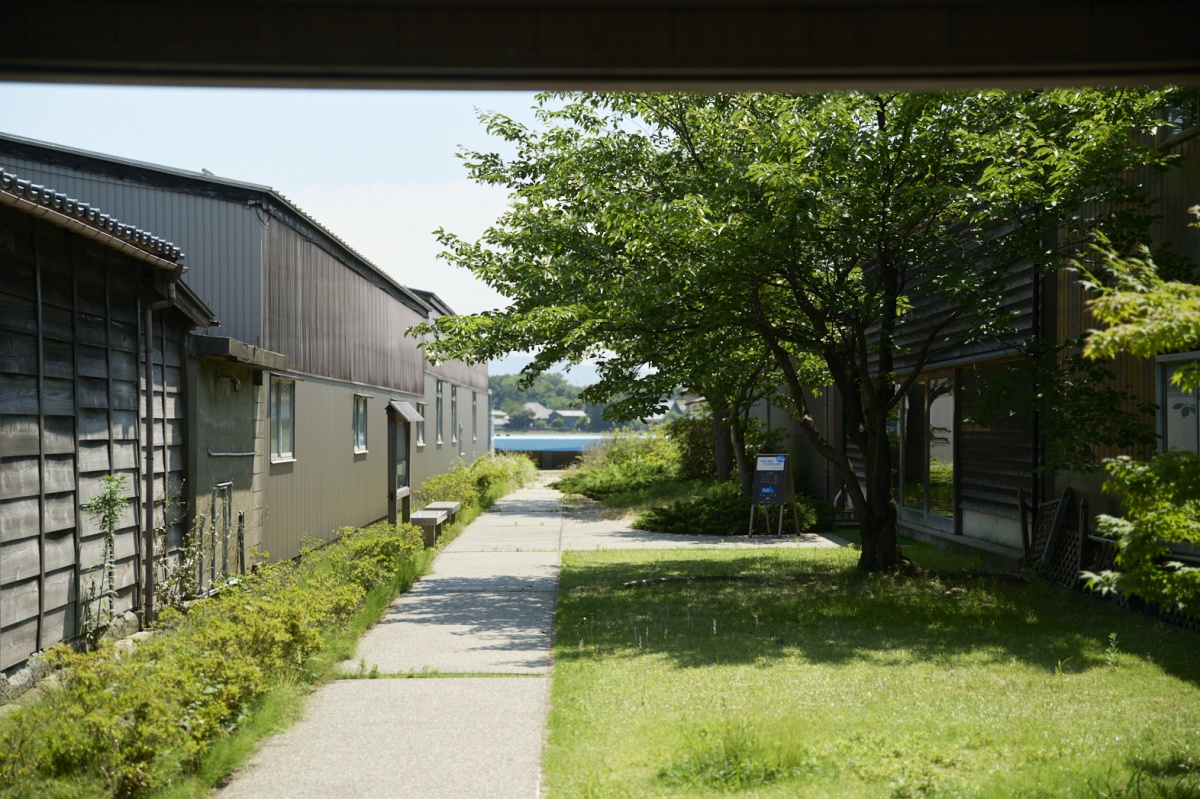
The townhouses of Mikuni are narrow and long, to allow access to their lifeline, the Kuzuryu river.
Longhouses of Mikuni
The townhouses of Mikuni are uniquely designed as long and narrow structures that provide access to both the town and the sea. Visitors can see how the merchant townsfolk used to live at the Old Kishina Family Residence, located at the mouth of the Kuzuryu River flowing into the Sea of Japan.

The Old Kishina Family Residence is now a museum for visitors, and a well-preserved example of how Kitamaebune merchants used to live.
It was built around a century ago by Kishina Sosuke, a local timber dealer. On display are the store cashier, kitchen, and traditional room, reflecting the comfortable life of a Kitamae ship merchant. The tiles used on the floor are made using Shakudani stone, mined from nearby Mt. Asuwa, located in central Fukui. The stone has an unusual flecked appearance and greenish-blue tint.
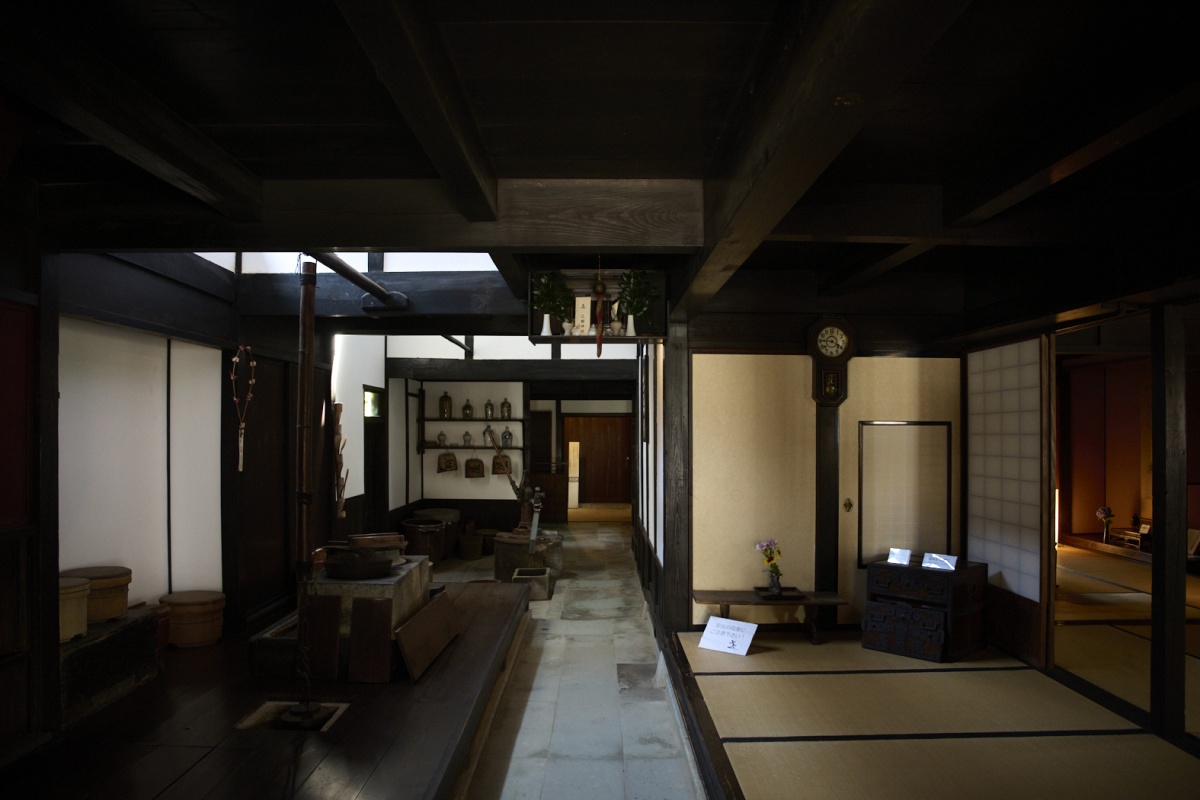
Shakudani stone paves the corridor, exuding a greenish-blue tint.
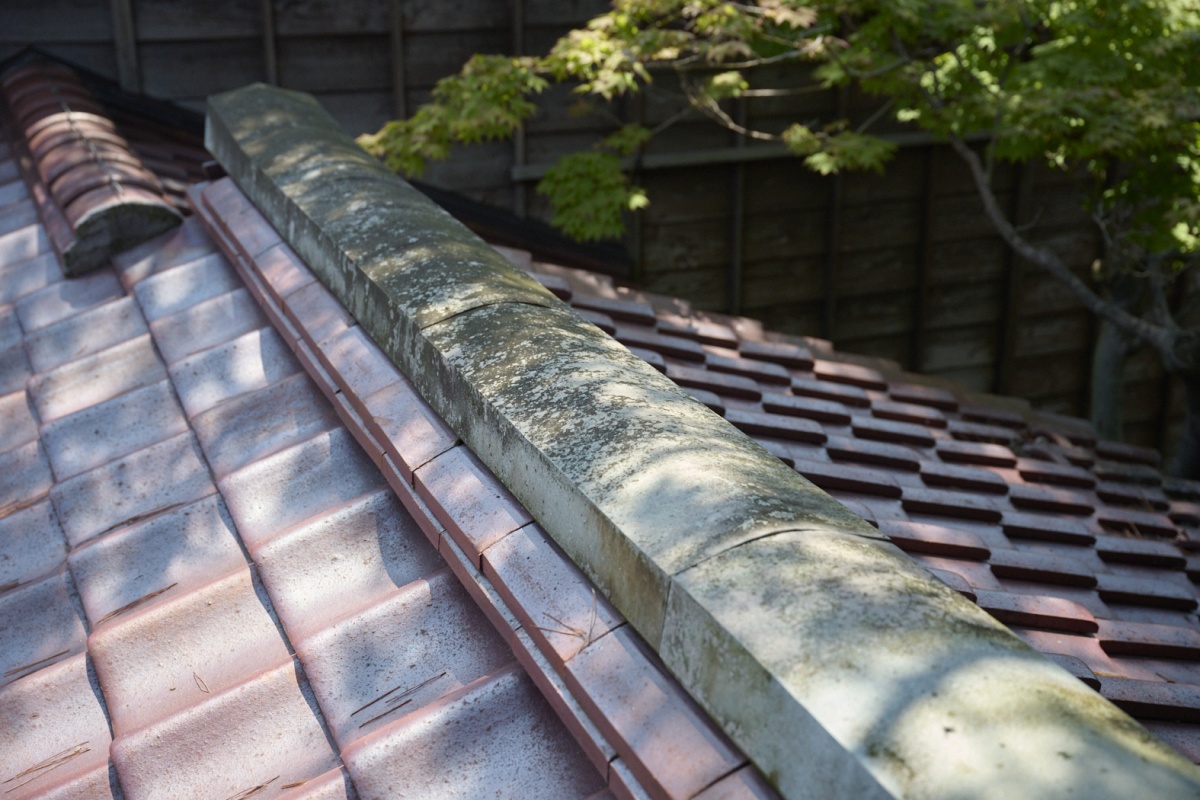
The Shakudani stone is also used on the roof tiles.
About Shakudani stones
The Shakudani stones were loaded on the Kitamaebune ships to help stabilize them on their voyage. After reaching their port of destination, such as Hokkaido or Osaka, the stones were unloaded and left there in order to load the local goods. Some of these stones can still be found in Hokkaido and other ports of call.
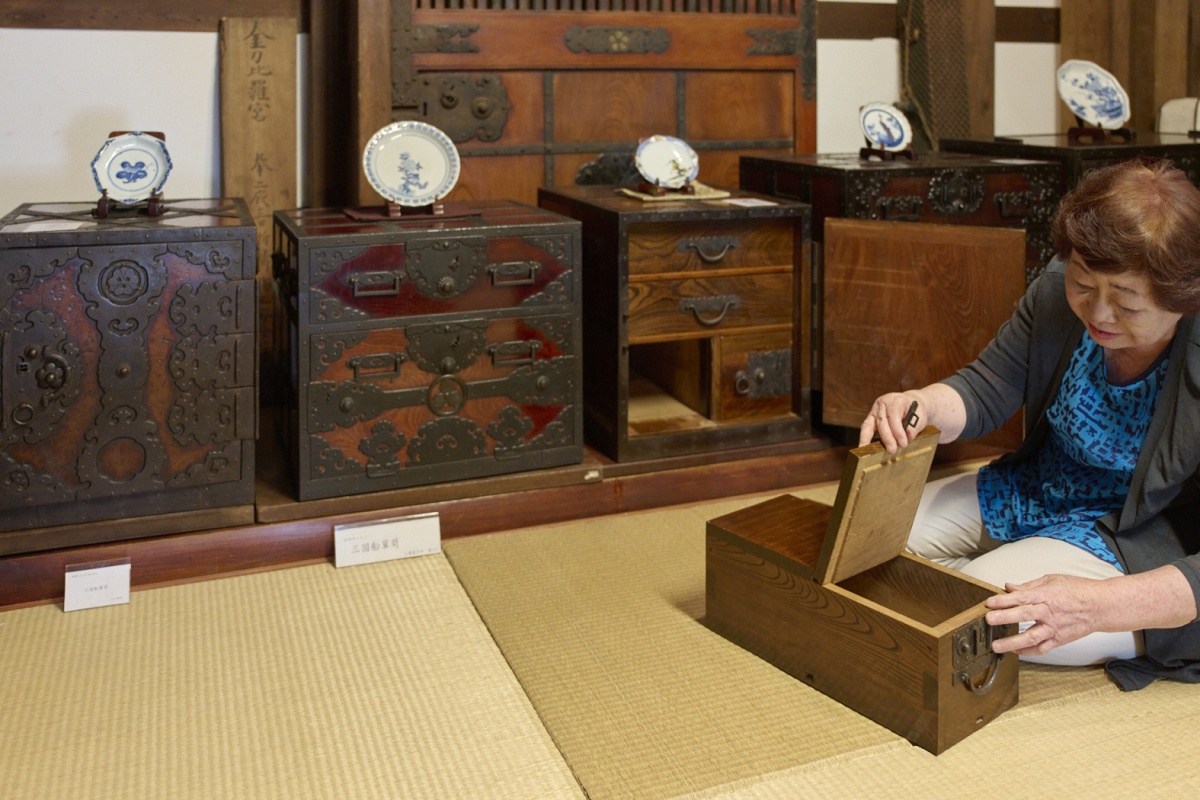
The sophisticated design of the funadansu is demonstrated by a shopkeeper.
Safe at Sea
Kondo Kobijutsu is a local antique shop, where visitors can browse through a fine collection of funadansu, or sea chests. The Kitamaebune merchants would use the chests on their travels for storing documents, money and other important items. It is usually made of paulownia wood, chosen for its airtight quality that protected their valuables. The chests are intricately designed to be difficult to open for anyone but their owners.
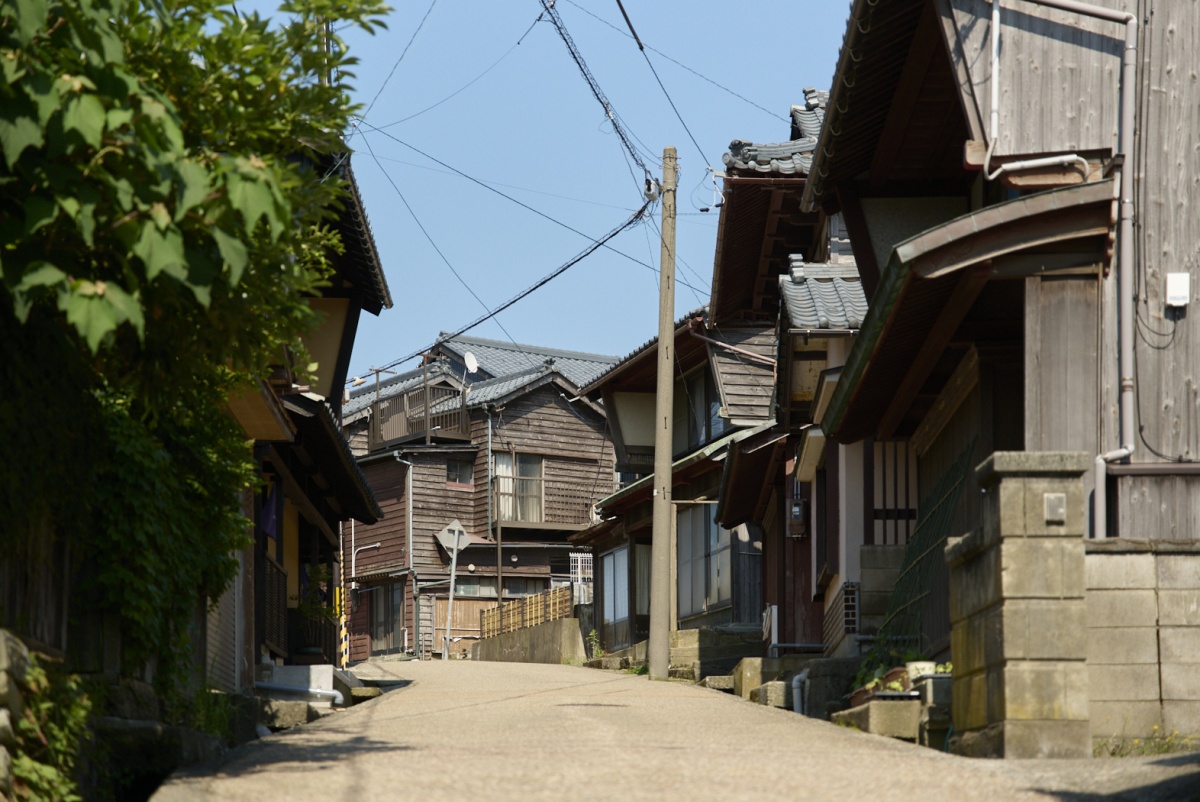
The former red-light district Mikaerizakabashi is now a quiet residential neighborhood.
Don’t look back
Like any thriving port of call, there was a lively red-light district at the port town. The road leading away from this district was named Mikaerizakabashi (looking back slope bridge) referring to how the Kitabunemae merchant patrons would look back longingly when they crossed the bridge and left the pleasure zone.
Houses with History
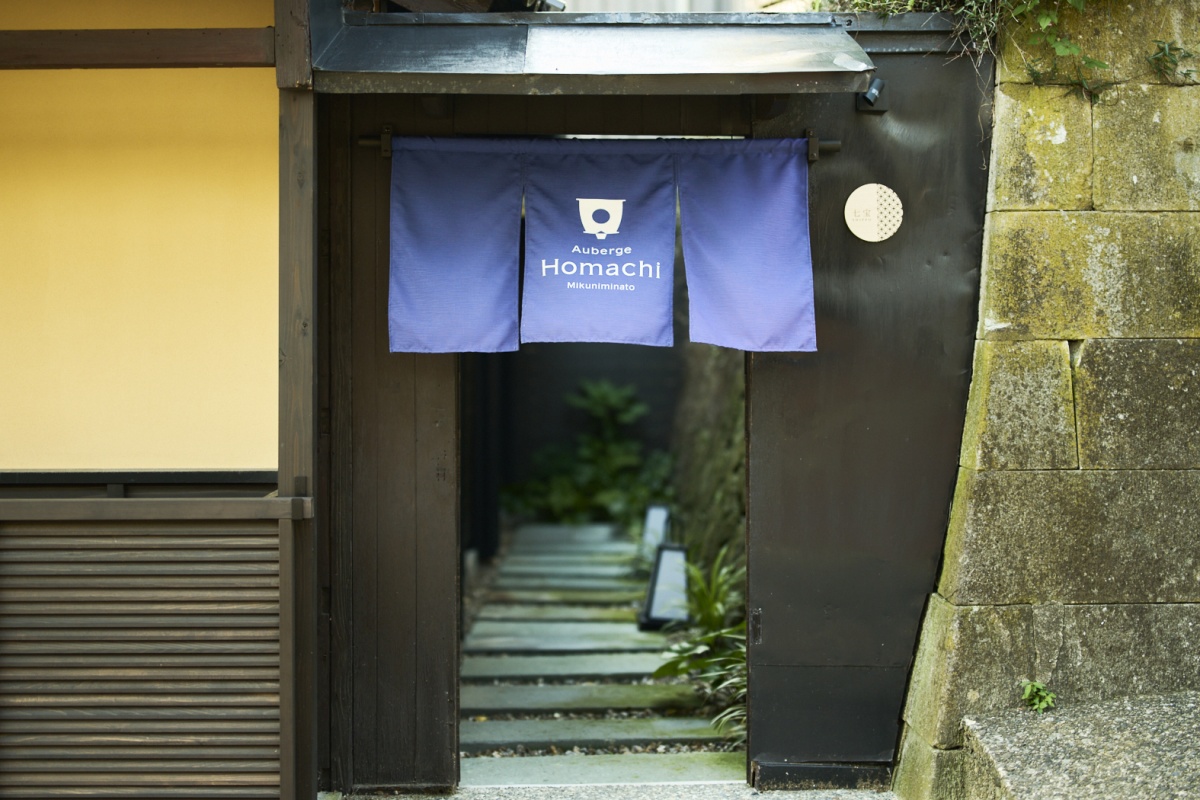
Townhouses that belong to the Auberge Homachi display this curtain.
Among the old townhouses that have been converted into guest rooms are a variety of traditional Japanese styles. Shakudani stones mark the entrance, Echizen tiles are used on the roofs and Fukui-sourced wood and Echizen washi paper is featured in the guest rooms. Existing floor beams and boards are preserved in the interior to reflect its heritage. To complete the experience, Echizen lacquerware is used for serving meals in the room. For a room with a view, the guest room Kikko, is located at the end of a townhouse (that used to be a warehouse) facing the Kuzuryu river.
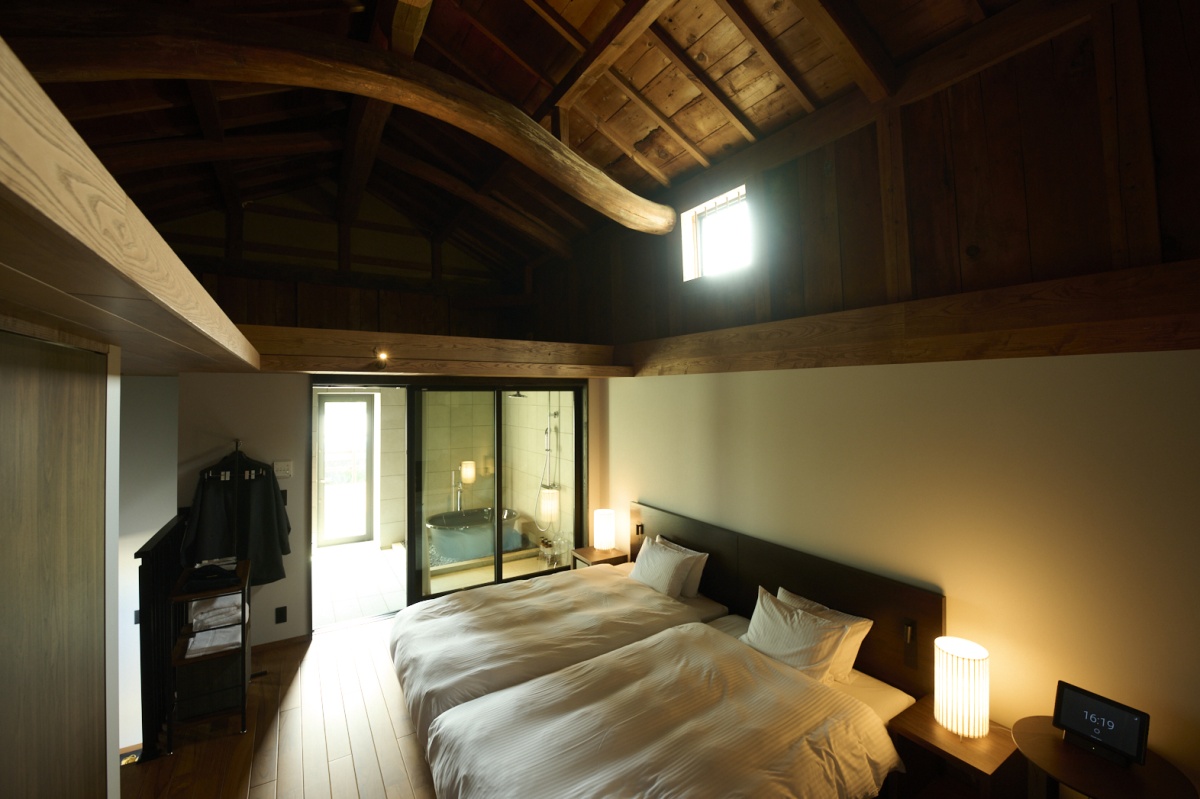
The room Kikko has an outdoor deck that overlooks the Kuzuryu river.
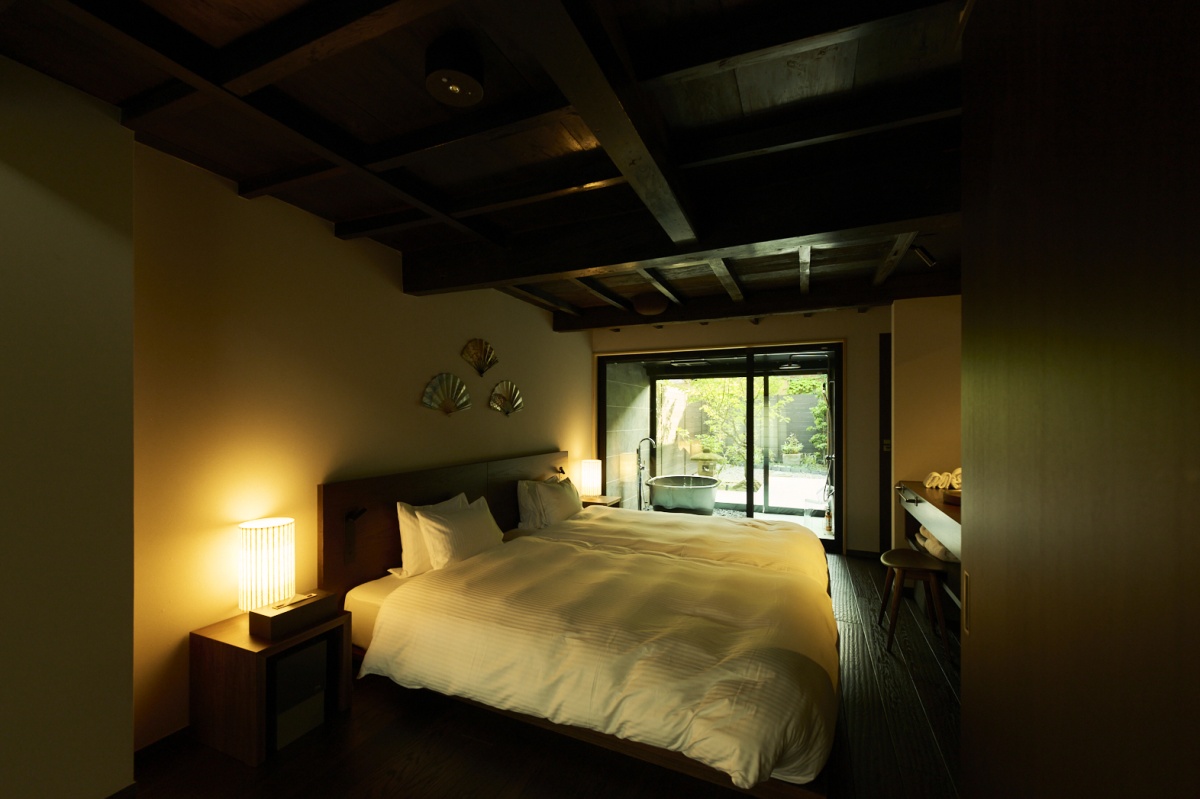
Old floorboards and beams tell of the building’s previous life.
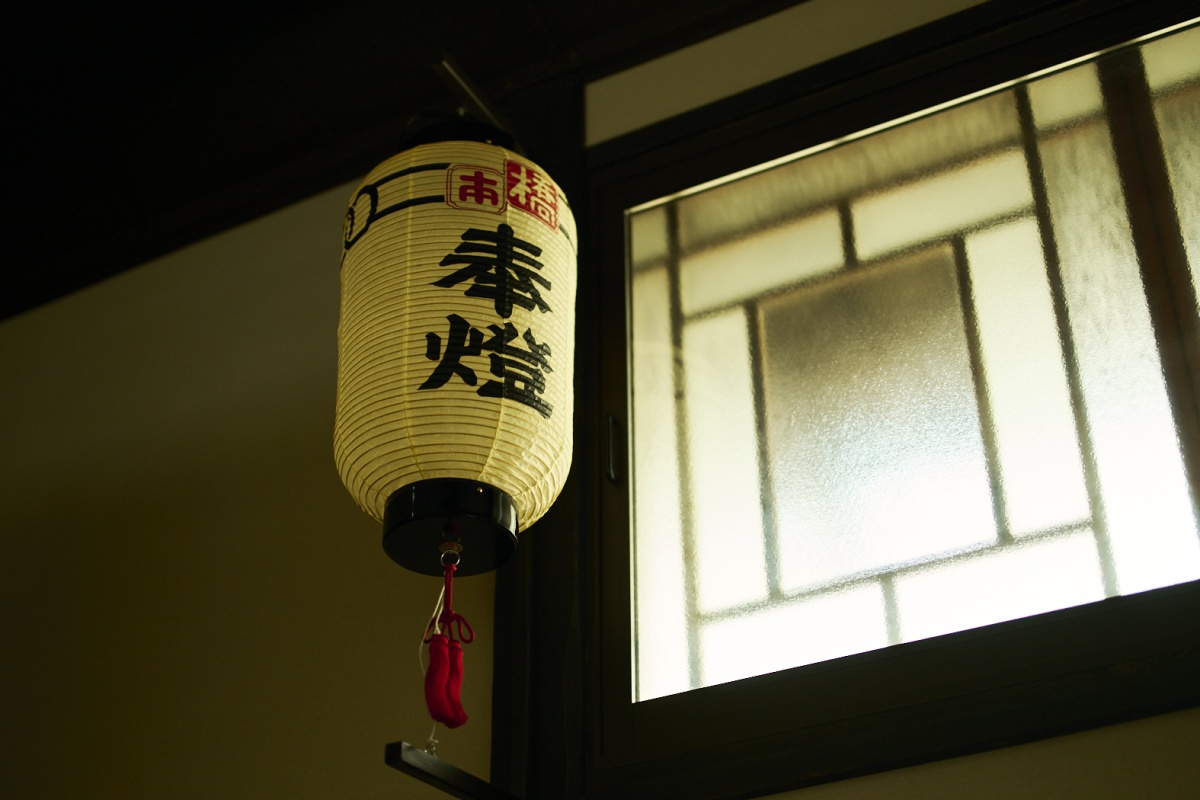
Mikuni Chochin lanterns are a traditional Fukui craft.
The handmade bamboo-frame lanterns that decorate the rooms are a reference to the Mikuni festival that takes place every May 19th to 21st. Floats fill the street and Mikuni Chochin paper lanterns are an integral symbol of the festival. The lanterns feature crests from each ward, and are hung under the eaves of townhouses, making for a special festive atmosphere.
FUKUI X FRENCH
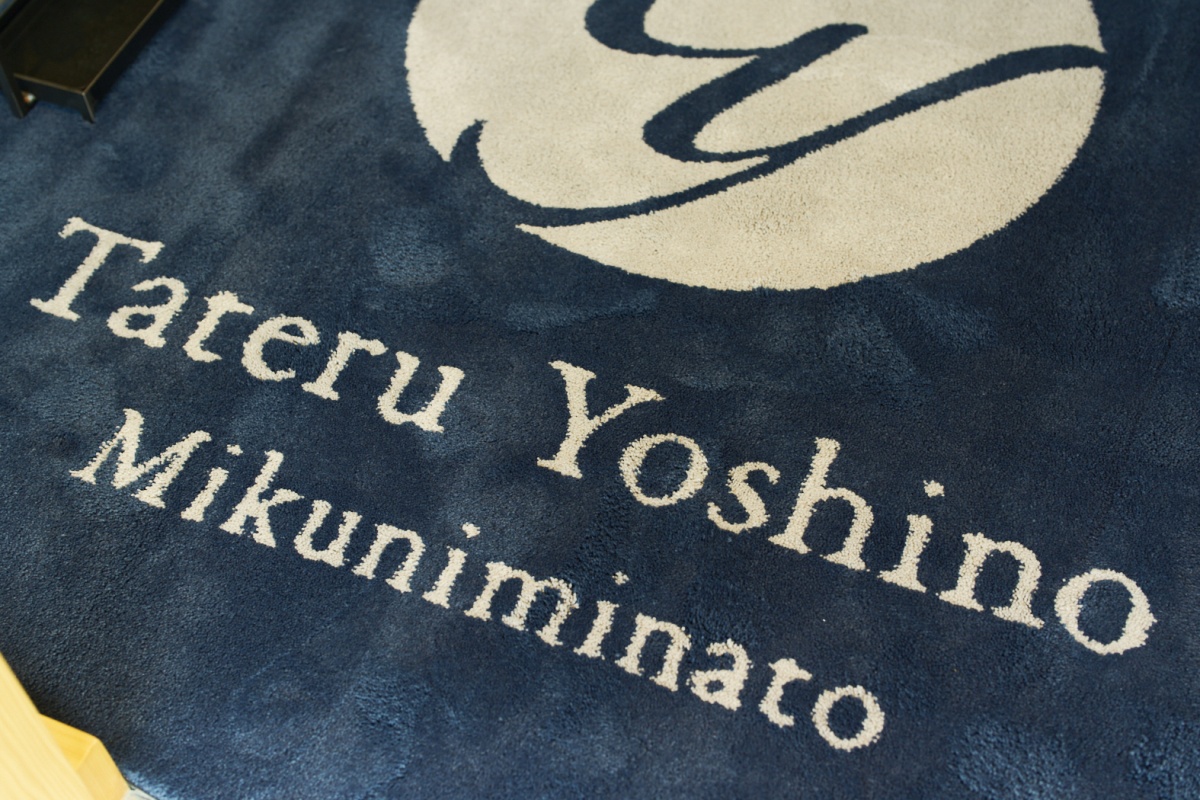
Indulge in French cuisine that uses seasonal Fukui ingredients at Tateru Yoshino Mikuniminato.
Tateru Yoshino Mikuniminato is the French restaurant affiliated with the Auberge Homachi. “There weren’t any French dining options in the area,” says general manager Sekita, “so we decided on French, focusing on local Fukui ingredients.”
The restaurant is named for its acclaimed chef, Tateru Yoshino, and it provides both breakfast and dinner to staying guests. Its also open to dinner reservations for diners not staying at Auberge Homachi.
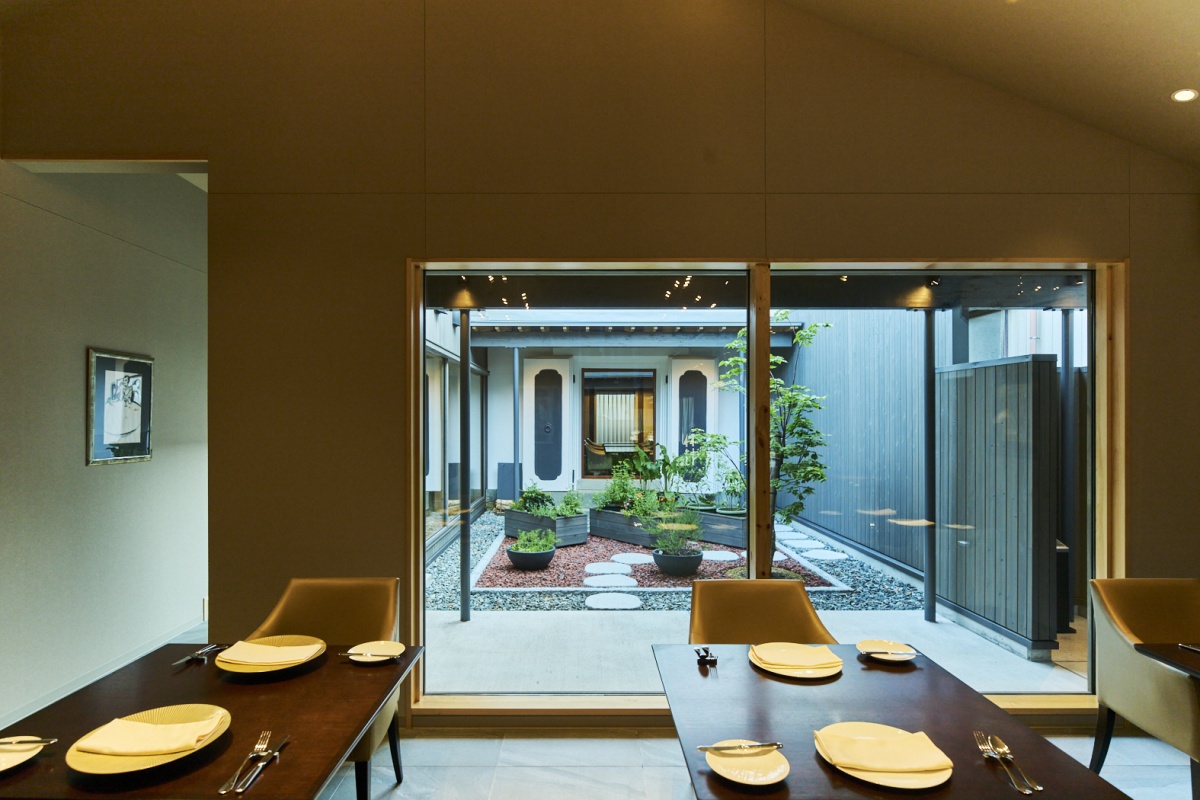
The restaurant boasts its own herb garden.
It features ingredients from its own herb garden, and diners can also expect local delicacies such as Echizen crab and Wakasa wagyu on the course menu. Pairings with Fukui sake are also available.
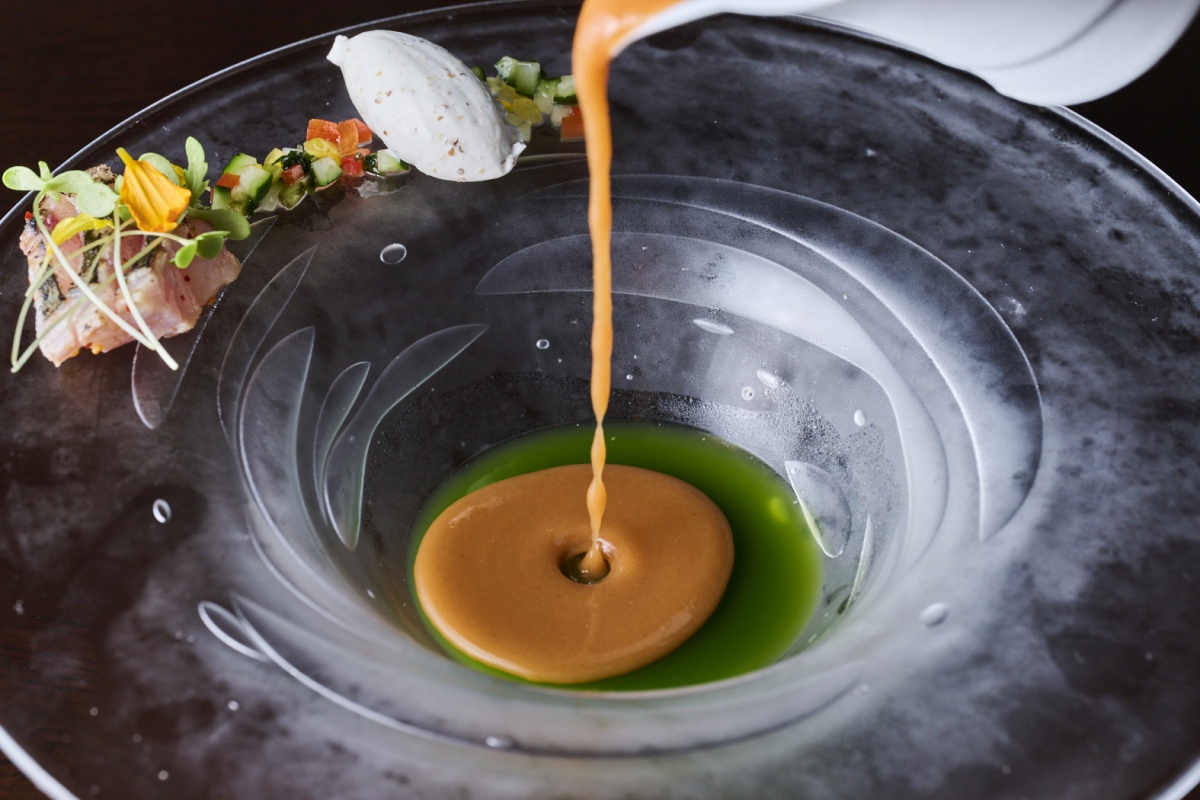
Gazpacho featuring a refreshing cucumber jelly and tomato sauce infused with garlic.
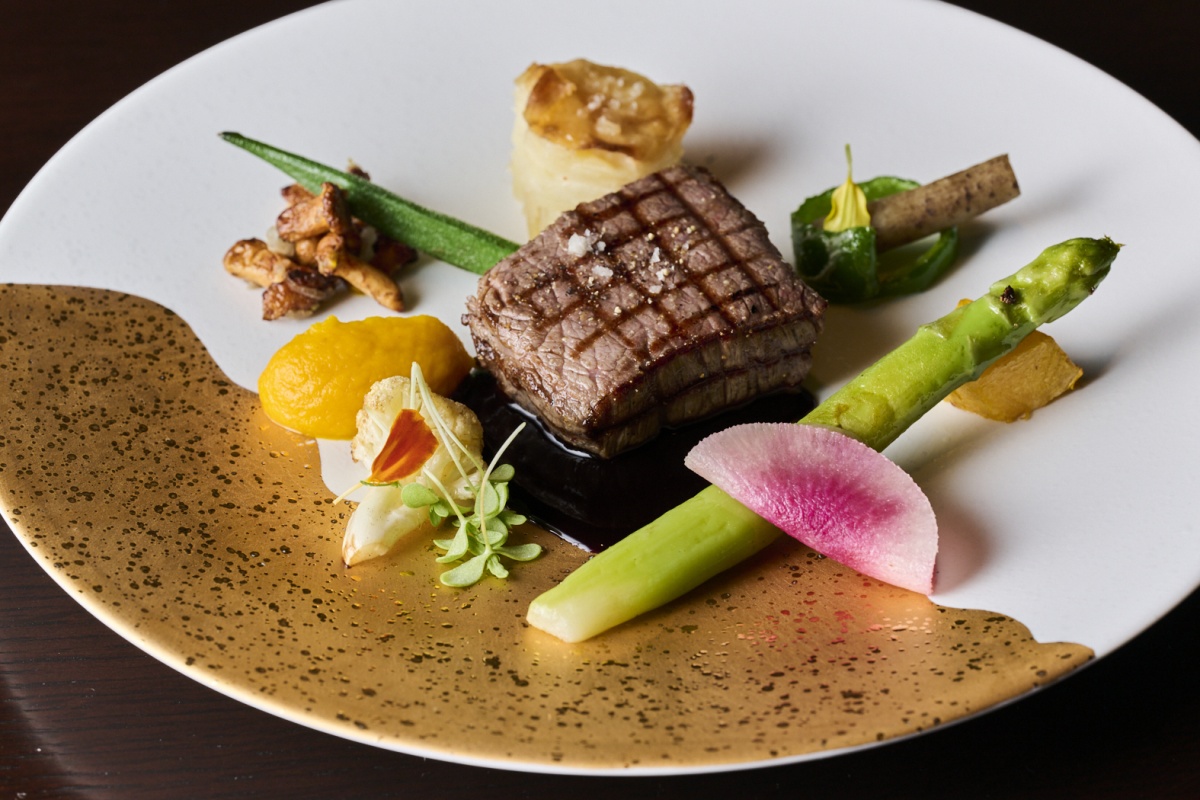
Seared Wakasa beef served with fresh local vegetables.
Winds of change for Mikuni Minato
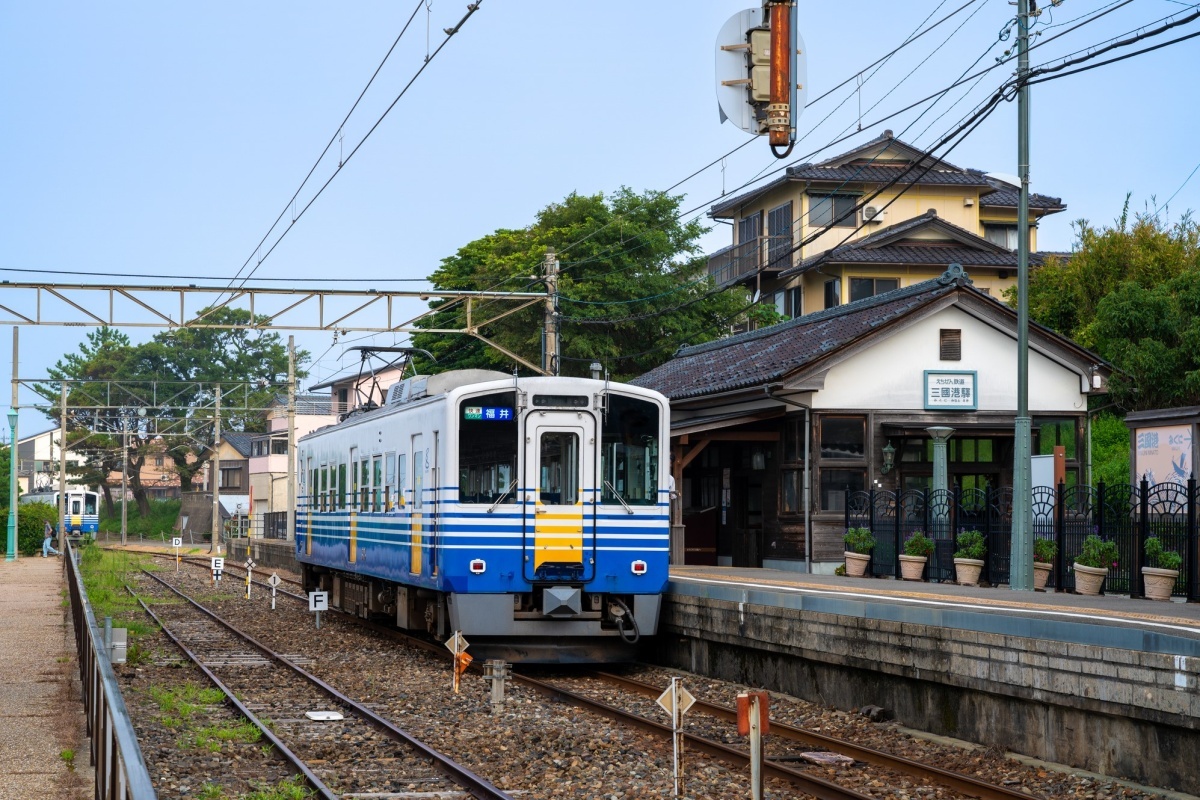
The port town of Mikuni Minato port town is steeped with a rich history as a flourishing trading port. As the shipping trade waned in importance, so did the town’s development. But now, the extension of the Shinkansen promises to bring a new wave of tourism to the serene area, and facilities such as Auberge Homachi are playing a part in revitalizing the area. Finding the right balance between luxury and long-stays is an issue for such townhouse hotels, the sails are surely set for winds of change in the area.
About Auberge Homachi Mikuniminato
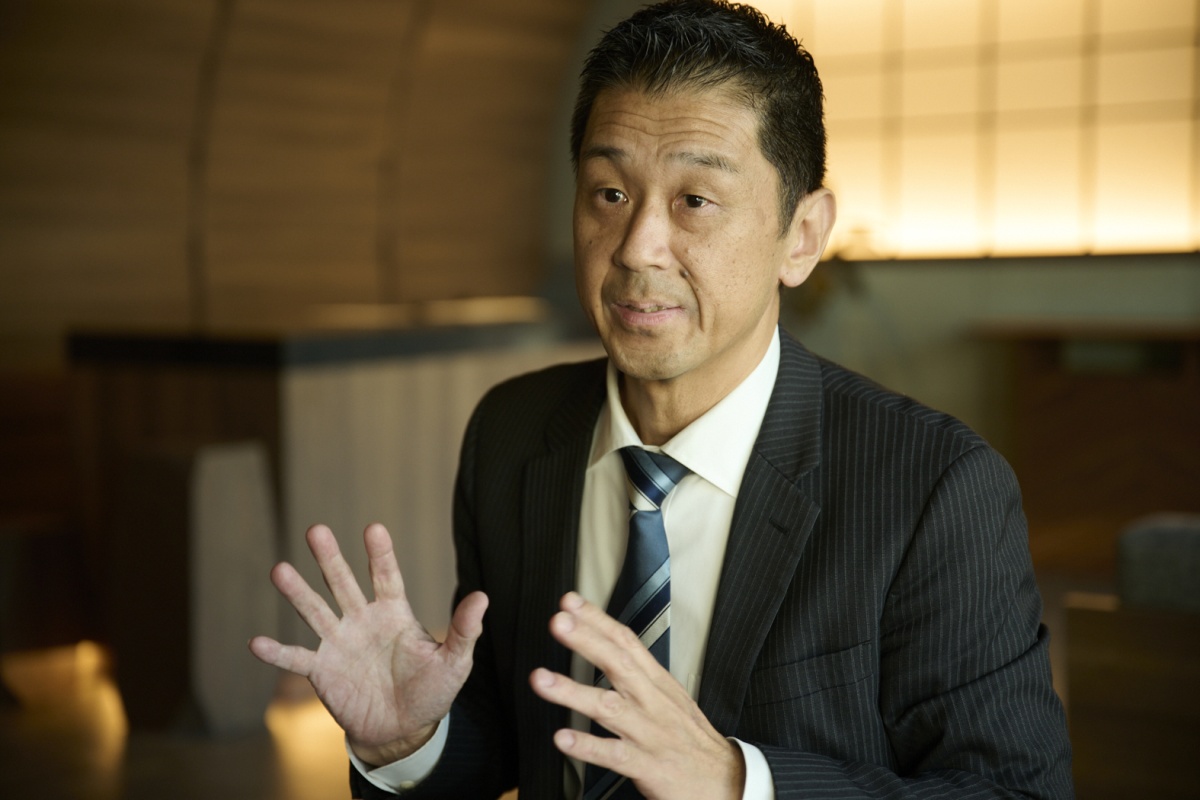
General Manage Kiyoshi Sekita says they are planning to add cycling tours as well.
The hotel offers nine guest rooms to choose from, with a different theme that reflects the character of each renovated historic townhouse. Accommodations are fully furnished with cooking and laundry facilities to cater to long staying guests. Guests can choose from various plans, inclusive or exclusive of meals and cultural activities. Booking can be made online from the official site: https://en.homachi.jp/rooms/



